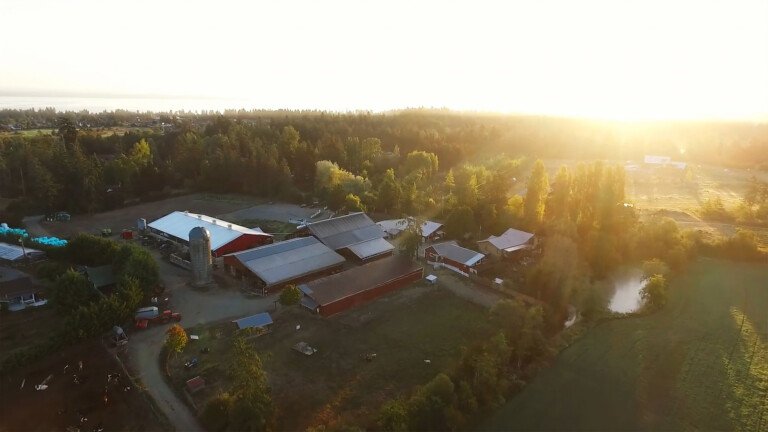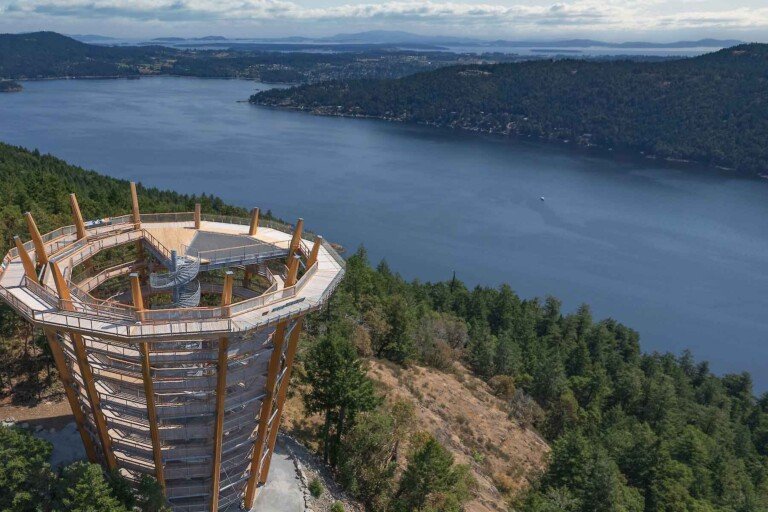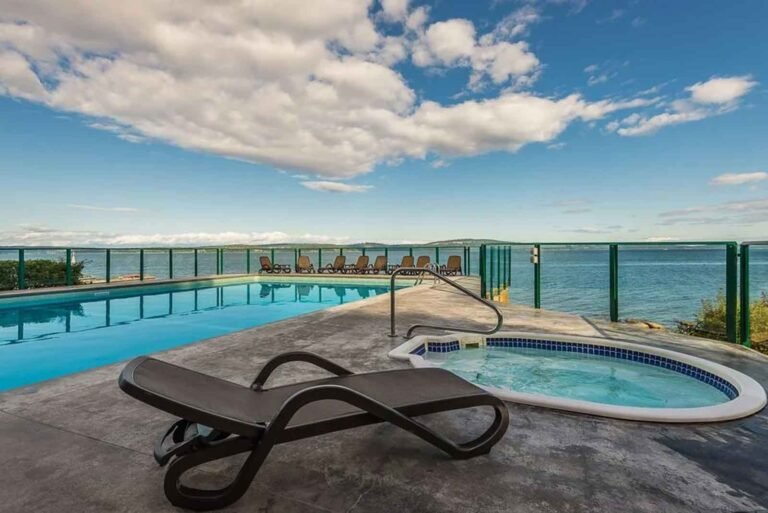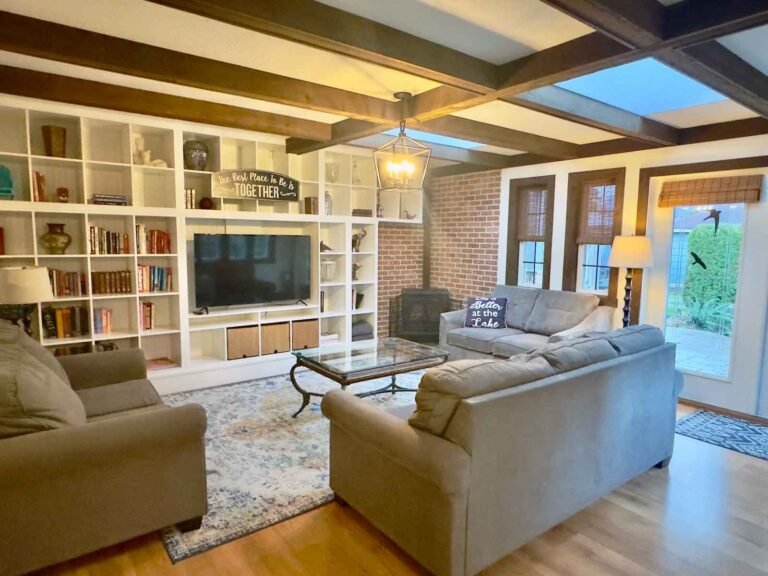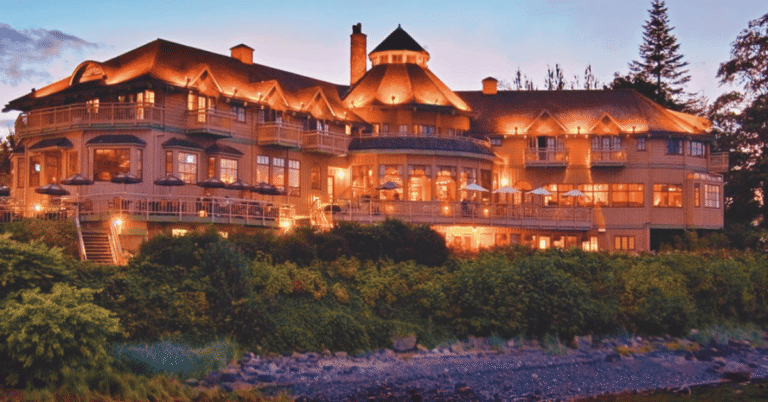In the extreme southwestern corner of British Columbia, in the sunny municipality of Delta, is Tsawwassen, and the Tsawwassen Ferry Terminal. Historically Delta has been a farming and fishing community comprised of three distinct communities: Ladner, North Delta, and Tsawwassen.
The Lower Mainland region is the traditional home of the Tsawwassen First Nation people, with their present-day 700-acre reserve located near the Ferry Terminal. The Tsawwassen People are one of 54 Coast Salish nations who traditionally inhabited this land for over 10,000 years.
From Tsawwassen, ferries cross the Strait of Georgia, delivering visitors to the Gulf Islands and Vancouver Island. Walk aboard or drive you car below deck on one of BC Ferries’ comfortable ferries. Getting to the islands is half the fun, as the route offers a spectacular journey over clear water and through beautiful islands. On a sunny day, take a stroll on the deck – you may see seals, killer whales or bald eagles.
Population: 21,090
Location: The Tsawwassen Ferry Terminal is located in Delta just off Highway 17, near the Canada/United States border, 22 miles (35 km) south of Vancouver and 22 miles (35 km) west of White Rock and the border post at Peace Arch/Douglas.
Rain or shine, its awesome at Splashdown Park, 3 minutes from the Tsawwassen Ferry Terminal. Ten acres of family fun hosts fantastic water slides, a giant hot tub, picnic areas, volleyball, basketball, and a video arcade.
Camping is difficult to find close to Vancouver and the Fraser Estuary. Camping is available in Point Roberts, Washington, at Lighthouse Park. A whale observation tower at Lighthouse Park rises above an interpretive display on orcas. There are three black-finned pods that frequent the park’s offshore waters from May to October. Even if the pods aren’t passing at the time of your visit, you can still learn a lot about the local whales from the display.
Windsurfing: The sun, the wind, and the beautiful waters of Boundary Bay call the young at heart to experience the sheer exhilaration of windsurfing. In Tsawwassen, on the south side of the BC Ferries causeway that carries travellers out to the ferry terminal, is a beach that attracts anglers and windsurfers. Best time to catch the breeze here is following a storm blowing from the south. Although this small bay empties at low tides, at other times you can rip out here. Take Hwy 17 south to the beginning of the causeway, then follow the service road that parallels the causeway. You’ll find portable toilets for changing and rough picnic spots where you can build a fire to dry out. Also in Tsawwassen is Boundary Bay Regional Park located on the east side of the isthmus. The winds can blow just as hard across its surface as out by the BC Ferries jetty. A good place to launch is the vehicle-accessible ramp at the east end of 1A Avenue via 67th Street, several blocks south of the park’s main entrance
Boundary Bay Regional Park: If it were summer year-round, Boundary Bay Regional Park might lose some of its seasonal appeal to migratory birds. The bay is one of the most important stops on the Pacific Flyway. Each spring and fall, more than 250,000 birds pass through the area—between 20,000 and 30,000 brant alone. Together with the sight of the annual salmon migration in the nearby Fraser River, this north-south passage is one of the most stimulating natural events in the region. Throughout the year, the Friends of Boundary Bay run numerous natural history interpretive programs in the vicinity of the bay and nearby Burns Bog.
A dike trail follows the perimeter of the bay from Boundary Bay Park east to Mud Bay. There are many good viewpoints for birding along the way. Drive to the south end of 64th or 72nd Avenue from Ladner Trunk Road, and walk up onto the dike from here. This is the Boundary Bay Regional Trail, all 12 miles (20 km) of which is public park. In winter, watch for snowy owls — they are often seen sitting motionless on fenceposts. Or a pair of oval-faced barn owls may fly overhead. There’s always magic at work on the shoreline and in the skies above Boundary Bay.
Boundary Bay: There aren’t many places in the world where you can swim between two countries with such ease as at Boundary Bay. A metal-scaffolded tower marks the place where the 49th parallel slices across the sandy beach. In summer, when the bay is a bathtub of sun-warmed seawater, you can make like a dolphin as you skip back and forth between Canada and the United States. When you’re ready to dry off, stroll the beach and experience the same thrill. Visitors can’t venture far into the United States. From the town of Point Roberts, Washington State’s portion of the beach — known locally as Maple Beach — peters out to rock and cobblestone as it nears an escarpment. Although there is public access to Maple Beach, almost the entire beach is privately owned. In summer, many swimmers gather near the border tower. The swimming is better here, especially at high tide when the bay fills to a greater depth than elsewhere. In 1792, the Spanish explorer Galiano named this Ensenada del Engaño, Mistake Bay, since he made the mistake of thinking there was a way inland from the end of the bay.
Low Tides: When a low tide drains Boundary Bay, its sandy bottom is as mottled as the moon. Little pools of seawater are trapped in sandy depressions and reflect the sky in an endless array of mirrors. Walk out and explore the expanse but be sure to keep an eye on the shoreline where you may have left your picnic basket. It’s easy to lose track of your spot unless you have a landmark such as a large umbrella or a distinctive piece of driftwood. The temptation is to stroll far out at low tide into the middle of the bay, where some of the most interesting wildlife features are revealed, either in the pools, beneath the sand, or on the shoreline. Thousands of birds—dunlin and sandpipers, herons and brants—follow the twice-daily rise and fall of the ocean as it rinses the bay. You can walk so far out into Boundary Bay that the vapour rising off the sand obscures the horizon and you feel very remote from land indeed. If you are here later in the day, sit back and watch the setting sun colour Mount Baker’s snow cone to the southeast, the most visible landmark on the horizon. Plan to be here in the days leading up to and immediately following the full moon, to watch it rise from behind the semi-dormant volcano. After dark, Boundary Bay Park is a great place to count stars. Although the park remains open throughout the night, if you plan to linger, make sure that you leave your vehicle outside the nearby park gates that close at dusk.
An impressive stretch of dike trail runs beside Mud and Boundary Bays east of Tsawwassen. The Boundary Bay Regional Trail, which includes the East Delta Dike Trail, winds around both bays, skirting the mudflats that once extended much farther inland. Today’s dike is a much sturdier version than the crude ones built at the turn of the century. You can put in a full day cycling 12 miles (20 km) one way between the Surrey-Delta border and Boundary Bay Regional Park in Tsawwassen. There are always shorebirds to entertain you, and towards evening the sky around Mount Baker lights up in the southeast.
Point Roberts is located on the extreme southern tip of the peninsula that defines Boundary Bay’s western shoreline. Visitors must cross the Canada-US border on Point Roberts Road in Tsawwassen to enter or leave the tiny enclave. Except for a steep hill south of Maple Beach, exploring Point Roberts makes for a mostly level, 2-hour tour by bike. The roads blend into one another in a simple rectangular grid and are easy to follow. Whatcom County, Washington, of which Point Roberts is a part, maintains Lighthouse Park, a delightful and often overlooked park at the extreme southwestern point of the mainland. From this windswept point, cyclists are rewarded with some of the best views on the entire Fraser Estuary: Haro Strait and the Strait of Juan de Fuca as well as the Strait of Georgia open up on three sides.
Golf: Tsawwassen has 2 courses: Beach Grove Golf Club in the heart of sunny Tsawwassen is a par 71 championship golf course, playing 6,200 yards from the back tees. The tree-course offers well-groomed fairways and manicured greens. The clubhouse is a great venue for weddings, anniversaries, and business meetings, or just relaxing with friends; and Tsawwassen Golf & Country Club, a public 18-hole, par-65 golf course with practice areas that include a 22-stall covered driving range, putting green, chipping green, and sand trap. There a few other golfing options in the area. Ladner offers the challenging 9-hole Covelinks Golf Course on Admiral Boulevard, and Delta offers the Sunshine Hills Golf Course, an 18-hole, par 54 (2,082 yards) public golf course on 64th Avenue. Golf Vacations in British Columbia.
Cycling: There’s great cycling to be had along the dike at Brunswick Point, about 3 miles (5 km) west of Ladner, north of Tsawwassen. To find the entrance to the dike, head west on Ladner Trunk Road from downtown Ladner, which soon becomes River Road West, passing the bridge over Canoe Passage, which links Delta with Westham and Reifel Islands. The road continues past the bridge for another 1.5 miles (2.5 km) as it winds its way to a gated cul-de-sac. There is parking here, beside the dike. Mount up and pedal off. A branch of the South Arm of the Fraser River spreads out beside the dike. It seems so relieved to have finally accomplished its long run to the ocean that it emits a contented gurgle. As the river narrows between Westham Island and Delta, it forms Canoe Passage. From the parking area, the dike trail leads west and then south as it curves around Brunswick Point. Canneries once thrived here at the turn of the last century, as attested to by the orderly rows of creosoted pilings that march like a doomed army out towards Roberts Bank. Suddenly, the city seems very remote. In the distance, a wall of Coast Mountains runs down the Sunshine Coast, crosses the North Shore, and then heads towards the Golden Ears, the distinctively shaped twin peaks of Mount Blanshard in the north Fraser Valley. The Strait of Georgia expands west to Vancouver Island. This scene is painted with broad brush strokes indeed. One of the joys of such an easygoing trail is that you can ride with your head up. You can do as much rubbernecking as you please without worrying about a mishap. The varied terrain of the Vancouver, Coast and Mountains region of BC accommodates every outdoor recreation known to man.
Roberts Banks: It will take you 30 minutes to ride the 4.5 miles (7 km) from the Brunswick Point trailhead to the beginning of the Roberts Banks coal port causeway, which juts out onto the bank. Freighters load coal brought here in railcars from southeastern British Columbia. You can ride out on the lengthy causeway for a look back at Brunswick Point and add another 4.5 miles (7 km) to your journey. The Tsawwassen Indian Reserve begins just south of the causeway. If the gate is open, you can extend your ride to the BC Ferries Tsawwassen terminal causeway, about 2 miles (6 km) farther south. Along the way you will pass viewpoints and places where you can park your bike and rest atop a driftwood log. There’s always plenty of wildlife along the shoreline, where herons stand on guard while rafts of waterfowl drift offshore.
Many farms on Westham Island also feature fresh fruit, vegetables, and flowers from June to October. You can hand-pick berries, or purchase vegetables and fresh flowers from a number of roadside stands. Watch for Westham Island Herb Farm’s prominent sign soon after you begin your trip across Westham Island. The Ellis family has been farming on Kirkland Road since the turn of last century. Dried flowers, herbs, and vegetables are for sale from late May to early November.
Circle Tours: See the best of the area on a driving Circle Tour. Head north out of Vancouver for the scenic Sunshine Coast and Vancouver Island Circle Tour, or stay on the intensely scenic Sea to Sky Highway, passing through the magical winter resort town of Whistler and Coast Mountains Circle Tour. To explore the rural farmlands and forests of the fertile Fraser Valley, take the Fraser Valley Circle Tour, travelling outbound on the scenic route north of the historic Fraser River, returning westwards along the Trans Canada Highway 1 to Vancouver. Circle Tours in British Columbia.


